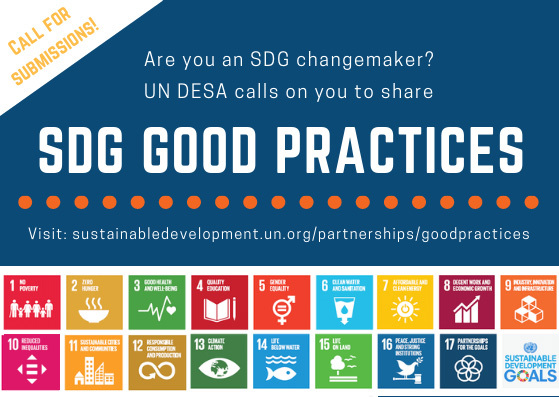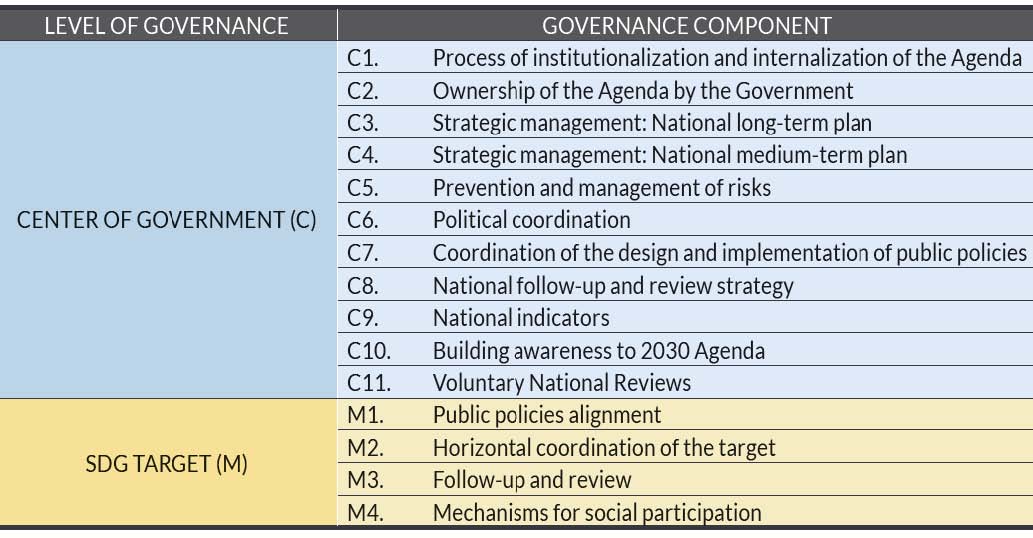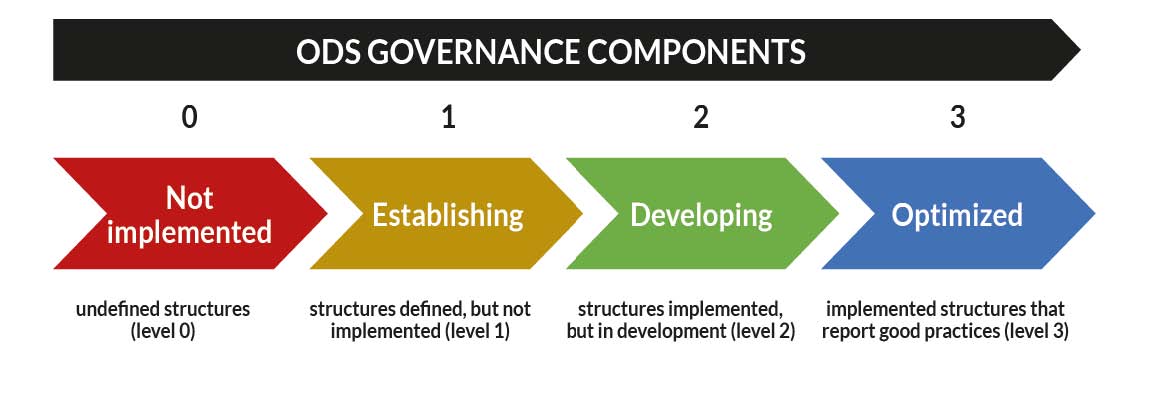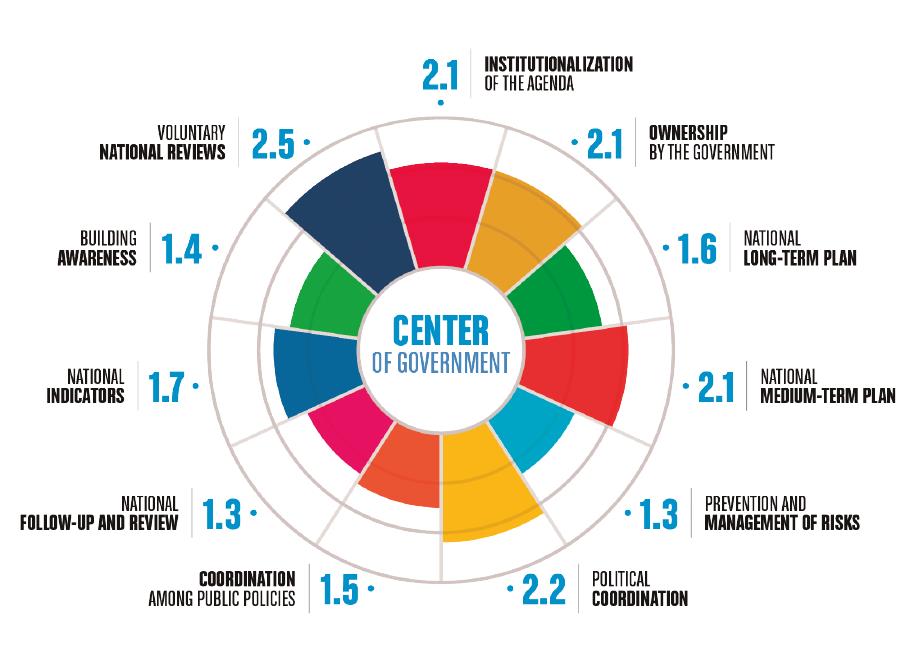Supreme Audit Institutions as drivers to foster 2030 Agenda implementation
Description
Supreme Audit Institutions (SAIs) are national institutions that ensure the sound use of public resources. This mission goes beyond oversight of the public budget and government accounts and extends into the evaluation of public policies and programmes, including the management of environmental assets. SAIs are critical actors to advance sustainable development. They can strengthen the implementation of the 2030 Agenda for Sustainable Development by evaluating public policies along the entire policy process, considering the interrelations between policies, assessing their results, and enhancing the level of transparency and accountability on how governments implement international commitments on sustainable development.
The General Assembly of the United Nations recognized, through Resolutions 66/209 and 69/228, that Supreme Audit Institutions (SAIs) can contribute to the achievement of national goals and priorities, as well as the internationally agreed development targets.<br />
To respond to this challenge, SAIs have been conduct coordinated audits as one of the tools to contribute to the improvement of the management and governance of the public sector. This type of audit is characterized by the coordinated work of different institutions with a common goal. In a coordinated audit, the Audit Institutions start from a common planning to undertake their work and produce their own reports. In the end, the results are consolidated and reported through communication products, such as the infographic, the summary file and this executive summary.<br />
Given that, in 2017 SAIs of eleven countries (Argentina, Brazil, Chile, Costa Rica, Ecuador, Guatemala, Mexico, Paraguay, Peru, the Dominican Republic and Venezuela, as well as the audit institution of Buenos Aires Province) have evaluated the preparedness of the Latin American governments to implement the 2030 Agenda for Sustainable Development, as whole. Besides that, SAIs have assessed the preparedness to implement Target 4 of SDG 2, regarding sustainable food production systems.<br />
It was possible to evaluate, in a systemic and standardized manner, the existence and operation of the governance components corresponding to the Center of Government, as well as Target 2.4. The main tools used in this work were the Analysis of Fragmentation, Overlap and Duplication (FOD), originally conceived by the Government Accountability Office (GAO), the SAI of the United States, and the Governance Evaluation Scale, developed by the Brazilian Court of Audit (TCU in Portuguese), by means of which each governance component could be evaluated by the auditors in an objective and substantiated manner.<br />
The results, which can be easily observed through the SDG Radar, show that there has been progress in the Latin American region regarding the institutionalization of the 2030 Agenda, although there is still much to be done, mainly in terms of public governance, a key element for the overcoming of great part of the challenges posed.<br />
Due to that, SAIs provided specific recommendations to support SDG implementation such as strengthening long-term planning processes, promoting cross-cutting risk management, and improving stakeholder engagement in national SDG reporting processes. SAIs also highlighted the critical importance of adopting cross-sectoral coordination mechanisms and integrated monitoring systems to progress towards sustainable food production.<br />
SAIs, through coordinated audits, allow the consolidation of audit findings and recommendations, thus creating new opportunities to inform the follow up and review of the SDGs at the regional and global levels.
Special consideration is due to the support provided by the German Cooperation to TCU and OLACEFS, through the Deutsche Gesellschaft für Internationale Zusammenarbeit (GIZ), as it contributed to the accomplishment of this coordinated audit, which strengthened the external control in the environmental area and the sustainable development.
An international coordinated audit is the combination of several audits conducted by different SAIs in their respective countries on the same topic following an integrated planning approach. This strategy has traditionally been used to study transnational issues such as environmental resource management. It has also been used in federal states to evaluate programs in which regional governments play an important (and usually complementary) role. The final report can thus provide a useful snapshot of how a specific issue is being dealt with at a national or regional level.
Recently, coordinated audits have also been used as a robust capacity-building mechanism, since they allow methodological and technical knowledge to be applied to a real-life problem, resulting in a concrete product—the audit report—that is sector- and region-specific. This concept builds upon the practice of using pilot audits as a component of an integrated impact learning strategy. Coordinated audits provide distinct advantages, with the latter facilitating close long-term collaboration among SAIs and the production of a consolidated audit report on a major regional issue.
Coordinated audit is especially useful for addressing crosscutting and cross-border issues, such as the implementation of the 2030 Agenda. In addition, coordinated audits also allow for the exchange of experiences, knowledge and methods among the participating entities, as well as the dissemination of good international practices, strengthening the performance of the SAIs in the improvement of public institutions.
There are multiple opportunities for capacity building throughout the coordinated audit process. Through a combination of training approaches, such as online courses and in-person workshops, auditors keep abreast of current methodology and deepen their knowledge of the specific subject matter involved in the audit. During the research and planning phases, outside experts in the field and in regional intricacies can play a key role in ensuring that auditors have the information and skills they need to conduct their work. In later phases, when the audit is being carried out and results discussed, auditors can continue to glean insights through contact with these experts.
The phases of a coordinated audit can be summarized as follows, though adaptations can be made for each initiative:
1. Selection of a high priority audit topic
2. Feasibility study, including definition of audit type and refinement of scope and objectives
3. Audit planning and preparation
3.1. Selection of audit teams and their coordinators
3.2. Capacity building on audit techniques and tools (online and in-person)
3.3. Capacity building on the specific audit topic
3.4. Workshop or reference panel with specialists on the audit topic
3.5. Preliminary studies
3.6. Development of the audit plan
4. Audit execution in each country
4.1. Monitoring of the audit schedule and plan
4.2. Online meetings to exchange information on progress in each country
5. Technical meeting to discuss audit results and determine the structure of the consolidated report
6. Publication and dissemination of the consolidated report
7. Monitoring of recommendations
8. Critical assessment of the initiative as a whole and discussion about continuity of the cooperation efforts
Given the diversity of strategies that national governments have been developing to implement the
SDGs, both governance mechanisms already existing in the government and those that were created
(or adapted) especially for the 2030 Agenda were considered.
The audit evaluated the preparedness of the national governments to implement the SDGs both at the center of government level (meaning those entities responsible for assisting the Executive Branch in the process of strategic decision making), and at a specific SDG target level (the achievement of which will be obtained through the public policies managed by the sectoral entities).
The governance components evaluated at each level were the following:
To carry out the assessment, the participating Audit Institutions used standardized techniques and tools. In addition to the traditional audit tools (document analysis, official letters, interviews, surveys), two innovative techniques were used: The Analysis of Fragmentation, Overlap, Duplication and Gaps (FOD Analysis) and the Governance Evaluation Scale for SDG.
The FOD Analysis was used in the evaluation of the governance components of Target 2.4. Thus, this technique will be detailed in the results section corresponding to Target 2.4. The Governance Evaluation Scale for SDG allows for the evaluation of 11 governance components for the center of government, and 4 components for the implementation of the SDG target. Each of the governance components was assessed on a scale divided into 4 levels:
The consolidated results of the audit for the center of government level can be seen below in the SDG
Latin America - Center of Government Radar. The main findings of the work are:
Main findings - Center of government:
1. Deficiencies in the processes of institutionalization and internalization of the 2030 Agenda.
2. Lack of a long-term planning for the implementation of the 2030 Agenda in most countries.
3. Lack of risk prevention and management mechanisms in an integrated manner at a national level for the implementation of the 2030 Agenda.
4. Deficiencies in the follow up and review processes of the SDGs, as well as the preparation of Voluntary National Reviews.
Most importantly, what sets coordinated audits apart as an impact learning strategy par excellence is that auditors apply the skill set they have acquired in concrete practice, maintaining international collaboration among peers and specialists for an extended period. In sum: auditors receive theoretical training in the topic they are auditing from specialists in the field, as well as in ISSAI compliant audit methodology, through distance learning coursework combined with in-person training; they immediately apply the knowledge attained, in collaboration with peers from various SAIs, through each step of the audit process. The consolidated audit report, which provides a unique perspective on a vital regional issue—though potentially an invaluable contribution in and of itself—is the icing on the cake.
Regarding enabling factors, financing was possible because of the German cooperation agency, Gesellschaft für Internationale Zusammenarbeit (GIZ), through the OLACEFS/GIZ Program. The main cost was in person workshop with 2 auditors from each SAI, about U$ 100.000,00 for 2 workshops (planning phase and consolidation phase).
Other example refers to a coordinated audit carried out in 2014 on protected areas management. Inspired by the successful Coordinated Audit on Protected Areas, COMTEMA will lead a new edition of this initiative. The contribution of protected areas to the conservation of biodiversity will be evaluated, based on the INDIMAPA methodology, the Aichi Targets and the 2030 Agenda for Sustainable Development.
This new edition will address new issues and broaden the geographical scope of the analysis. In addition, it will be an opportunity to follow up on the results of the previous work. More than 16 SAIs have already confirmed their participation in this upcoming audit (including SAIs of Europe and Africa).
The audit program will be carried out from 2018 to 2020, and will promote knowledge sharing and a stronger regional cooperation. The initiative is supported by project “Strengthening External Control in the Environmental Area”, a partnership between the Brazilian-German Cooperation for Sustainable Development (through GIZ) and OLACEFS.
For the first time, topic of protected areas will be analysed considering the 2030 Agenda and its Sustainable Development Goals (SDGs), the United Nations member states.
SAIs are at the core of effective, accountable and inclusive institutions for sustainable development, and can crucially support the implementation of the 2030 Agenda. Through their oversight function, SAIs can hold governments accountable for their efforts to implement the SDGs. They can help ensure that financial resources mobilized for SDG implementation are spent efficiently, effectively and transparently. External auditors can also provide independent insight on the outcomes and impacts of programmes and policies to achieve the SDGs, on critical risks and challenges, as well as on good practices involved in setting up the necessary governance systems to implement the SDGs.<br />
Considering this, SAIs have concluded the 2030 Agenda is taking its first steps in Latin America. The results of the audit show that there is mobilization of national governments for the implementation of the SDGs, both at the center of government level and at sectoral entities level.<br />
However, the preparedness of the countries of this region is still at an emerging stage, since various challenges related to the implementation of the Agenda keep on. The strategies adopted by the countries to face these challenges are diverse. For example, some countries designated existing institutions to lead the implementation of the Goals, while others created new administrative structures for that purpose. National governments also differ regarding the priorities for the implementation of the Agenda: some advanced in the integration between national plans and the Agenda; others invested in statistical strengthening to follow up their results, and others gave preference to mobilization actions of external actors and local governments to disseminate and internalize the Agenda.<br />
Based on the results of the audit and the conclusions above, the Audit Institutions participating in the audit made the following recommendations to their national governments:<br />
- Strengthen the process of institutionalization and internalization of the SDGs in their countries, and define a formal plan or strategy for the institutionalization of the SDGs and the 2030 Agenda, considering activities, responsibilities, products and deadlines;<br />
- Establish long-term planning tools for government actions which allow for the identification of national priorities and the structuring of government action in a long-term perspective, also enabling the implementation and following up of the SDGs and their targets in the country;<br />
- Establish responsibilities, processes and mechanisms for integrated follow up and crosscutting review of the results of the national public policies, strengthening the technical<br />
The value of coordinated audits is especially relevant in the context of the SDGs, which demand from SAIs (as from governments) innovative ways of working, novel methodologies and different skills and capacities to audit complex issues and integrated policies, and to engage with multiple stakeholders.<br />
Coordinated audits allow the consolidation of audit findings and recommendations, thus creating new opportunities to inform the follow up and review of the SDGs at the regional and global levels.<br />
Finally, through coordinated audits such as this one, the Supreme Audit Institutions promote compliance with international agreements and stimulate the improvement of environmental governance towards sustainable development.
SDGS & Targets
Deliverables & Timeline
Resources mobilized
Partnership Progress
Feedback
Action Network


Timeline
Entity
SDGs
Region
- Latin America and the Caribbean
Geographical coverage
Photos



Website/More information
Countries

Contact Information
Carlos Lustosa, Director of environmental audit department
